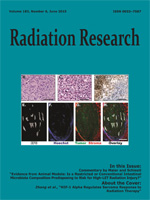Nuclear workers worldwide have been studied for decades to estimate associations between their exposure to ionizing radiation and cancer. The low-level exposure of these workers requires pooling of large cohorts studied over many years to obtain risk estimates with appropriate latency and good precision. We assembled a pooled cohort of 119,195 U.S. nuclear workers at four Department of Energy nuclear weapons facilities (Hanford site, Idaho National Laboratory, Oak Ridge National Laboratory and Savannah River site) and at the Portsmouth Naval Shipyard. The cohort was followed at the start of the workers beginning their radiation work (at earliest, between 1944 and 1952) through 2005, and we compared its mortality to that of the U.S. population. We also conducted regression-modeling analysis to evaluate dose-response associations for external radiation exposure and outcomes: all cancers, smoking- and nonsmoking-related cancers, all lymphatic and hematopoietic cancers, leukemia (excluding chronic lymphocytic), multiple myeloma, cardiovascular disease and others. The mean dose observed among the cohort was 20 mSv. For most outcomes, mortality was below expectation compared to the general population, but mesothelioma and pleura cancers were highly elevated. We found an excess relative risk (ERR) per 10 mSv of 0.14% [95% confidence interval (CI): −0.17%, 0.48%] for all cancers excluding leukemia. Estimates were higher for nonsmoking-related cancers (0.70%, 95% CI: 0.058%, 1.5%) and lower for smoking-related cancers (−0.079%, 95% CI: −0.43%, 0.32%). The ERR per 10 mSv was 1.7% (95% CI: −0.22%, 4.7%) for leukemia, which was similar to the estimate of 1.8% (95% CI: 0.027%, 4.4%) for all lymphatic and hematopoietic cancers. The ERR per 10 mSv for multiple myeloma was 3.9% (95% CI: 0.60%, 9.5%). The ERR per 10 mSv for cardiovascular disease was 0.026% (−0.25%, 0.32%). Little evidence of heterogeneity was seen by facility, birth cohort or sex for most outcomes. The estimates observed here are similar to those found in previous large pooled nuclear worker studies and also (with the exception of multiple myeloma) to those conducted in the Life Span Study of Japanese atomic bomb survivors. The tendency of observed risks to persist many years after exposure for most outcomes illustrates the importance of continued follow-up of nuclear worker cohorts.
How to translate text using browser tools
26 May 2015
Cancer Mortality through 2005 among a Pooled Cohort of U.S. Nuclear Workers Exposed to External Ionizing Radiation
Mary K. Schubauer-Berigan,
Robert D. Daniels,
Stephen J. Bertke,
Chih-Yu Tseng,
David B. Richardson
ACCESS THE FULL ARTICLE

Radiation Research
Vol. 183 • No. 6
June 2015
Vol. 183 • No. 6
June 2015




